Via In Loco Politico.
It all began on the night of November 21st. When news hit that Ukrainian president Viktor Yanukovych decided to reject a free trade deal with the European Union that would have brought the Ukraine one step closer to European integration, spontaneous protests erupted in the capital city of Kiev. The rejection of the free trade deal coupled with the crippling unemployment and government corruption led the protests to burgeon soon as university students joined in. In the weeks following the initial protests of about 2,000 people, between 400,000 to 800,000 protesters flooded the Maidan Nezalezhnost (Independence Square). Since then, many smaller protests have sprouted in cities throughout the country.
In the early morning of November 30, the protests turned violent when special police units began a crackdown on the otherwise peaceful protesters. Armed with batons, tear gas, and stun grenades, the special police descended upon Independence Square and dispersed the protesters and suppressed any mobile phone communications in the area.
A few days following the brutal crackdown, Kiev's District Administrative Court banned any protests in downtown Kiev until January 7, 2014. In response to the crackdown the day prior, between 400,000 to 800,000 protesters descended upon St. Michael's Square and soon began marching towards Independence Square with the goal of retaking it from riot police. The situation quickly deteriorated into an all-out riot when a small group of protesters stole a city bulldozer in an attempt to destroy a barricade that surrounded the protesters. At that moment, riot police began shooting tear gas and stun grenades at the protesters, which in turn responded with their own barrage of Molotov cocktails and rocks. The protesters soon took the Kiev city hall and still control it as of this writing.
The following day was followed by peaceful protests. At this point, the protesters have set up an impressive barricade around the perimeter of the demonstrations and formed somewhat of a tent city.
On the third consecutive Sunday of protests, protesters fought off riot police and toppled a statue of the leader of the October Revolution Vladimir Lenin . The protesters were found chanting "Yanukovych, you'll be next!" as they chipped away at the fallen monument.
The vast majority (roughly 80 percent) of the protesters wanted the government and president to resign and to host snap elections. The following weeks were filled with meetings between Russian President Vladimir Putin and Ukrainian President Viktor Yanukovych. In one such meeting, they signed the 2013 Ukrainian-Russian Action Plan, which settled restrictions in bilateral trade between the two nations and brought them closer together. The opposition quickly denounced the plan and blocked access to Parliament to prevent them from ratifying it.
Two weeks into 2014, parliament passed so-called "dictatorial" anti-demonstration laws, which the following infographic (courtesy of Citizen Journal) illustrates nicely.
After tapering off during the New Year and Orthodox Christmas, it seems as if protests have flared back up again in response to the passing of the repressive, undemocratic rules.
The protests can be streamed live here.
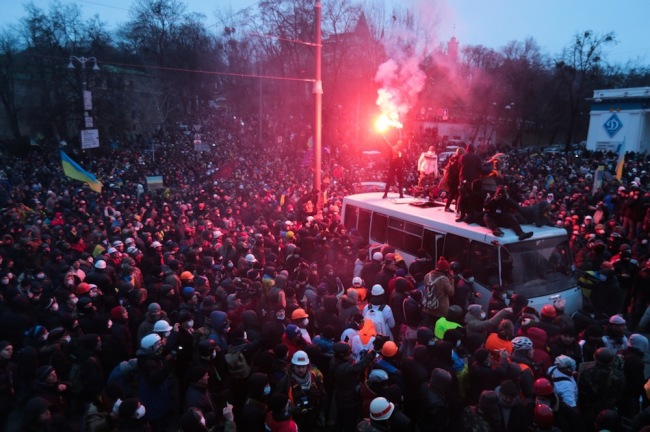
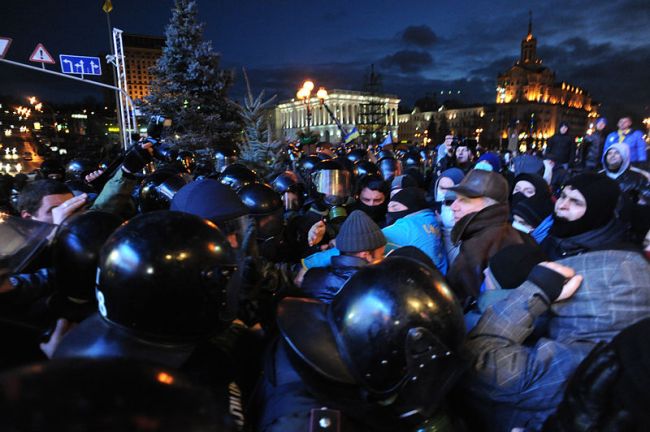
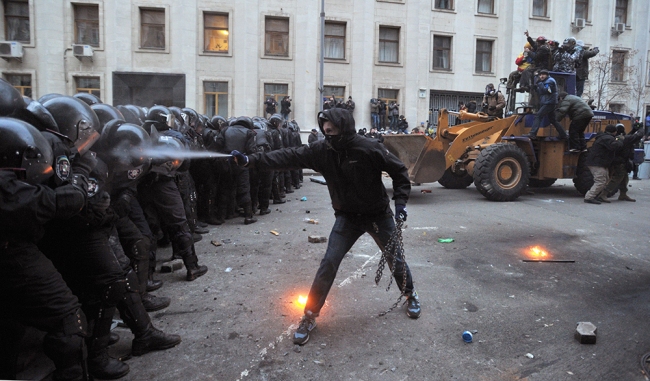
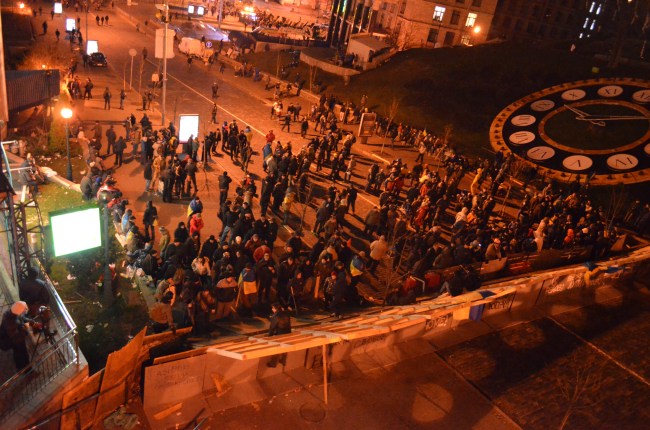
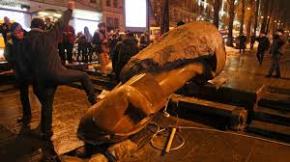
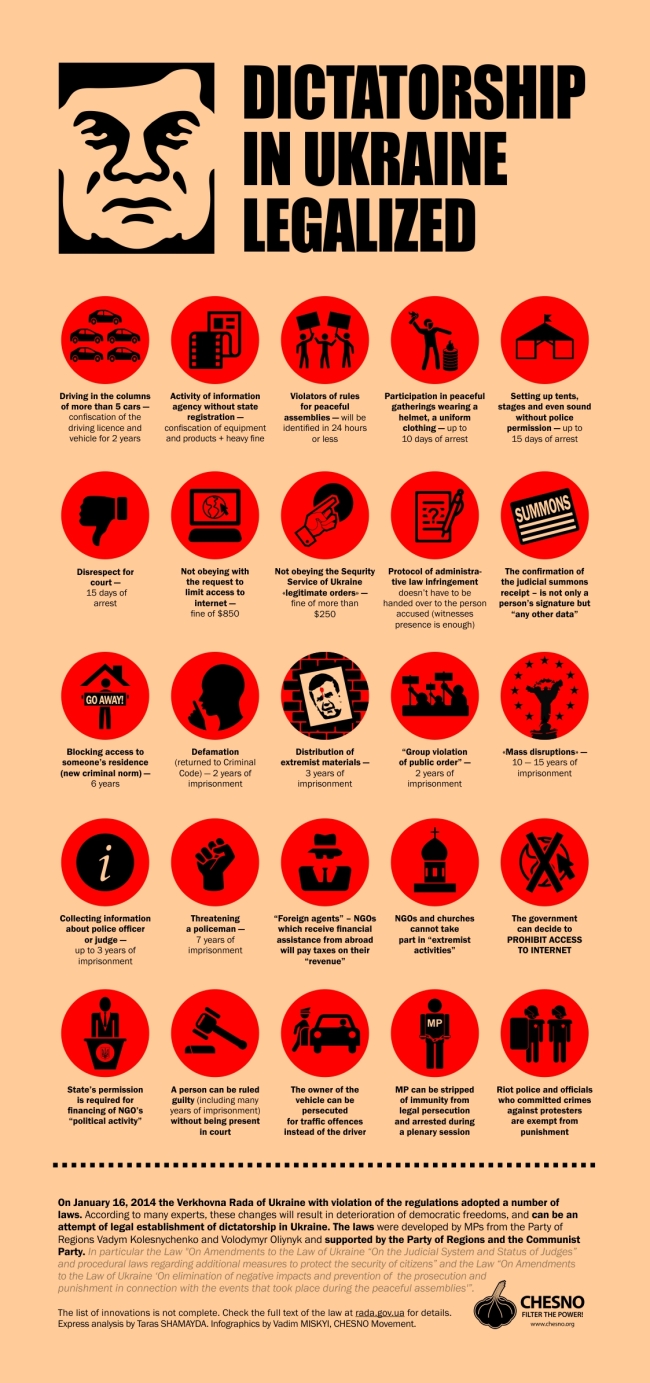
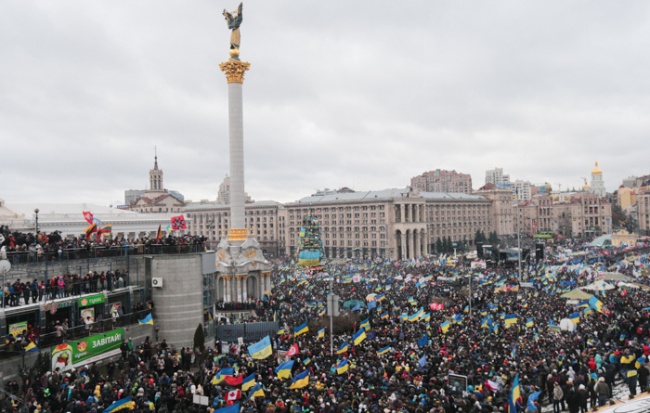
No comments :
Post a Comment